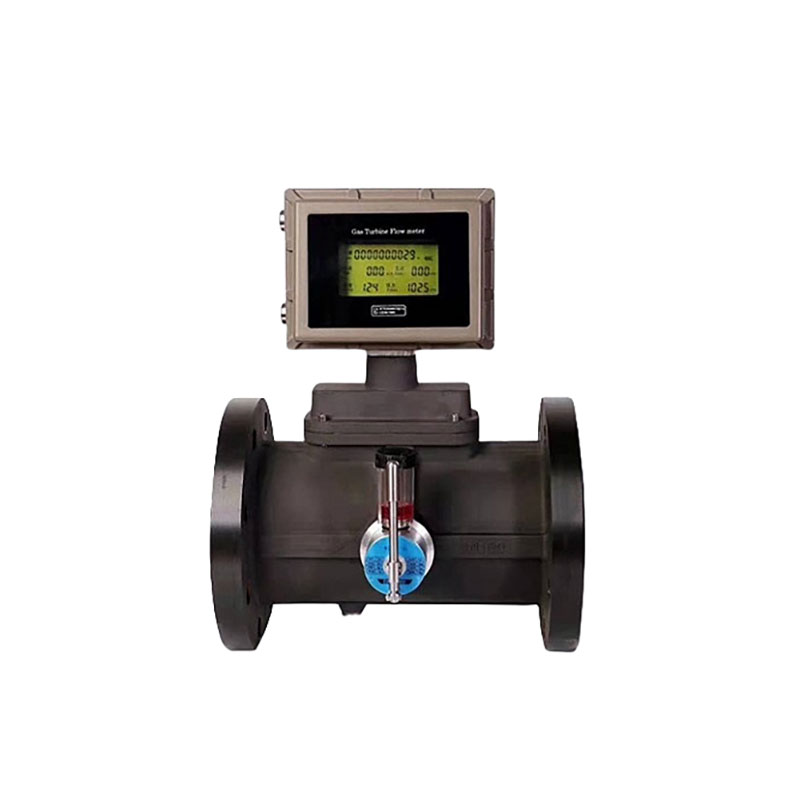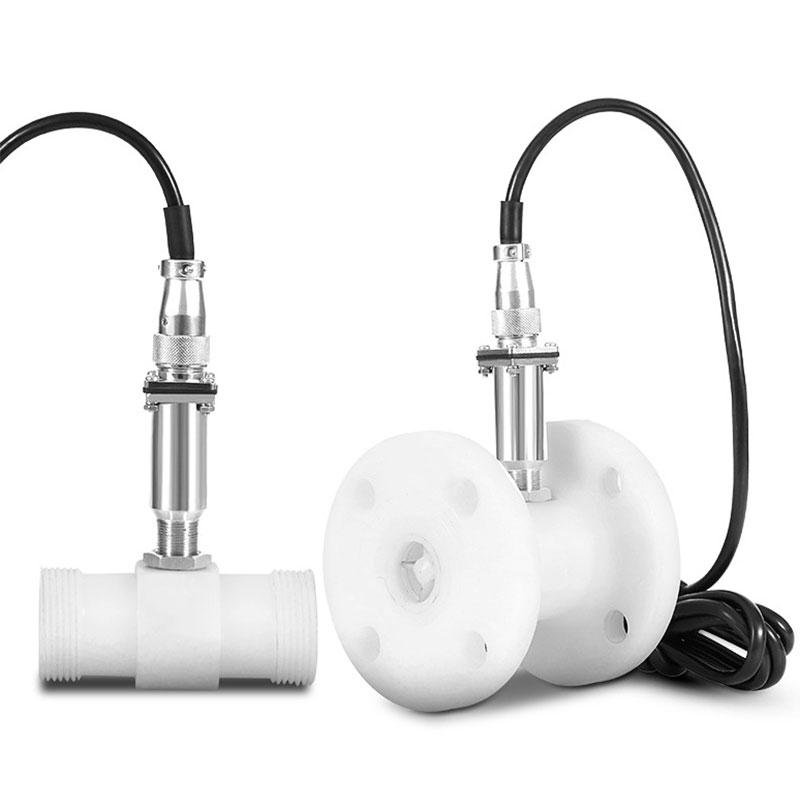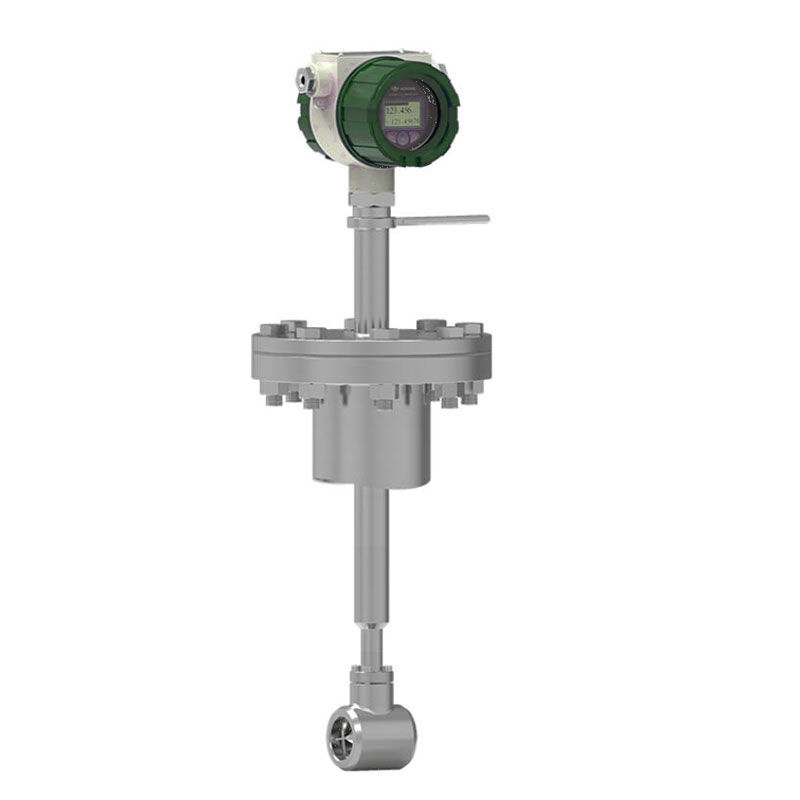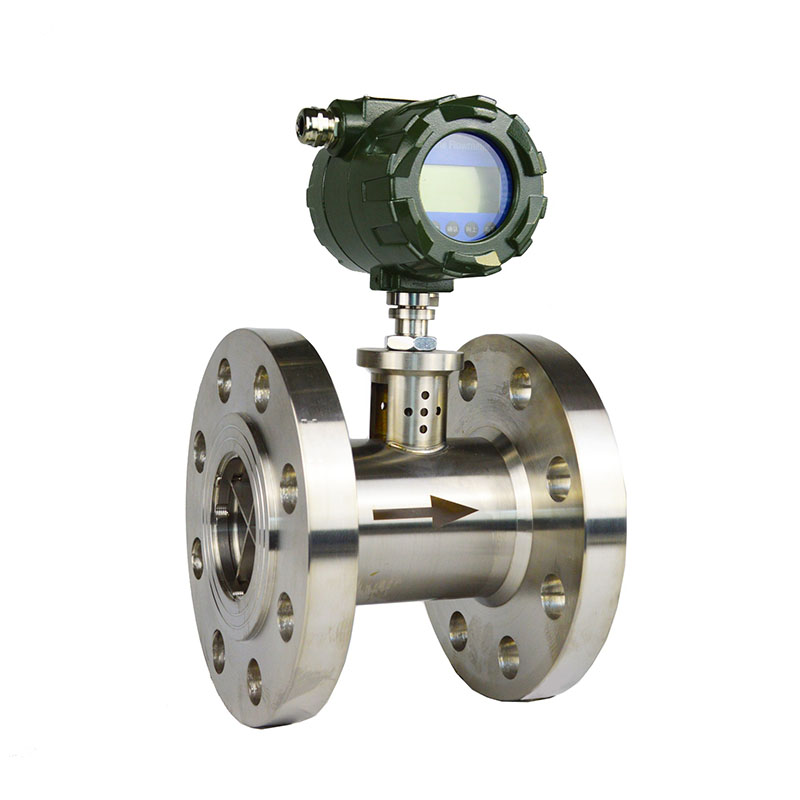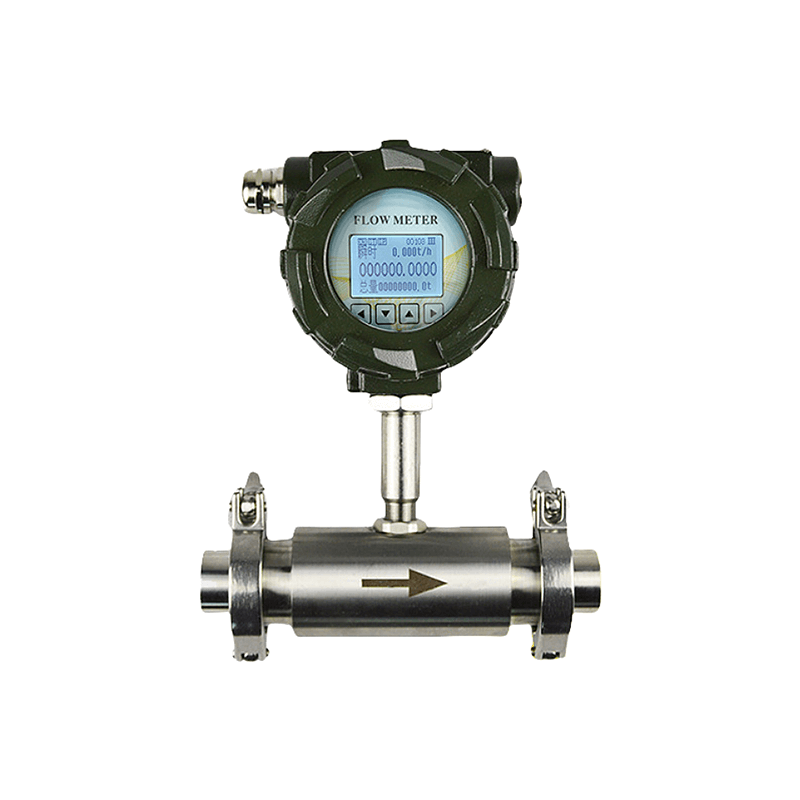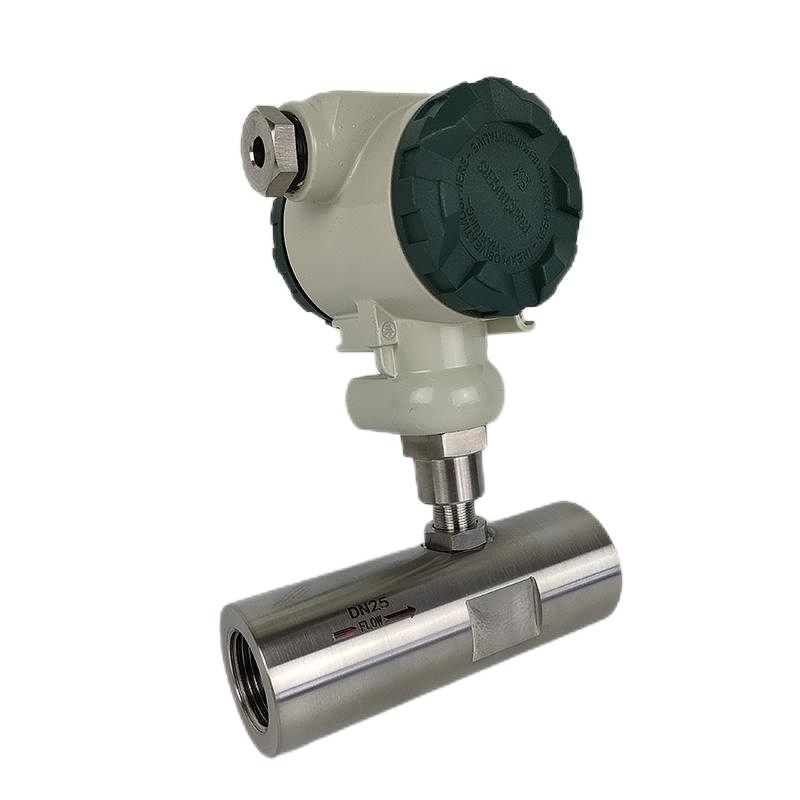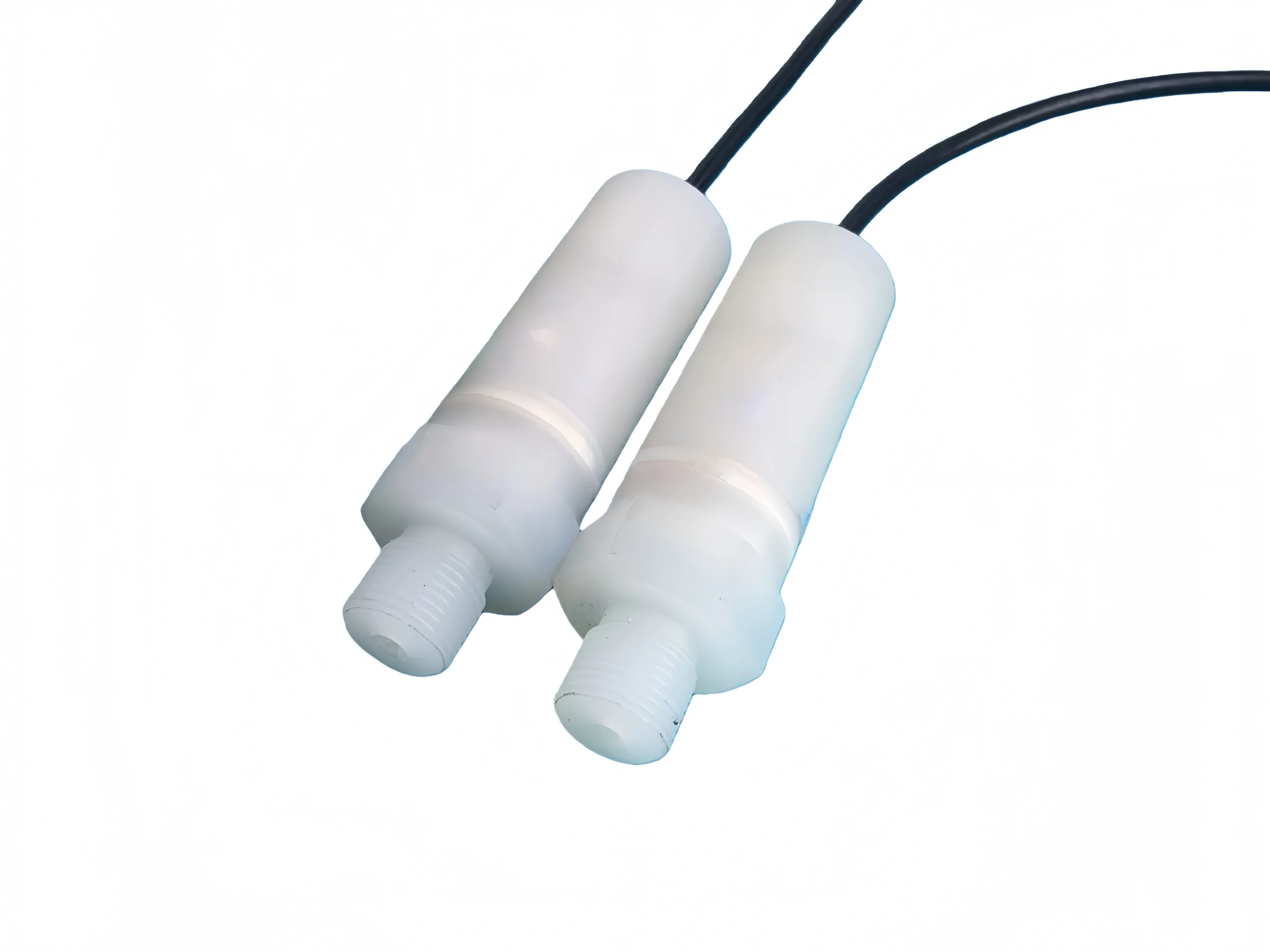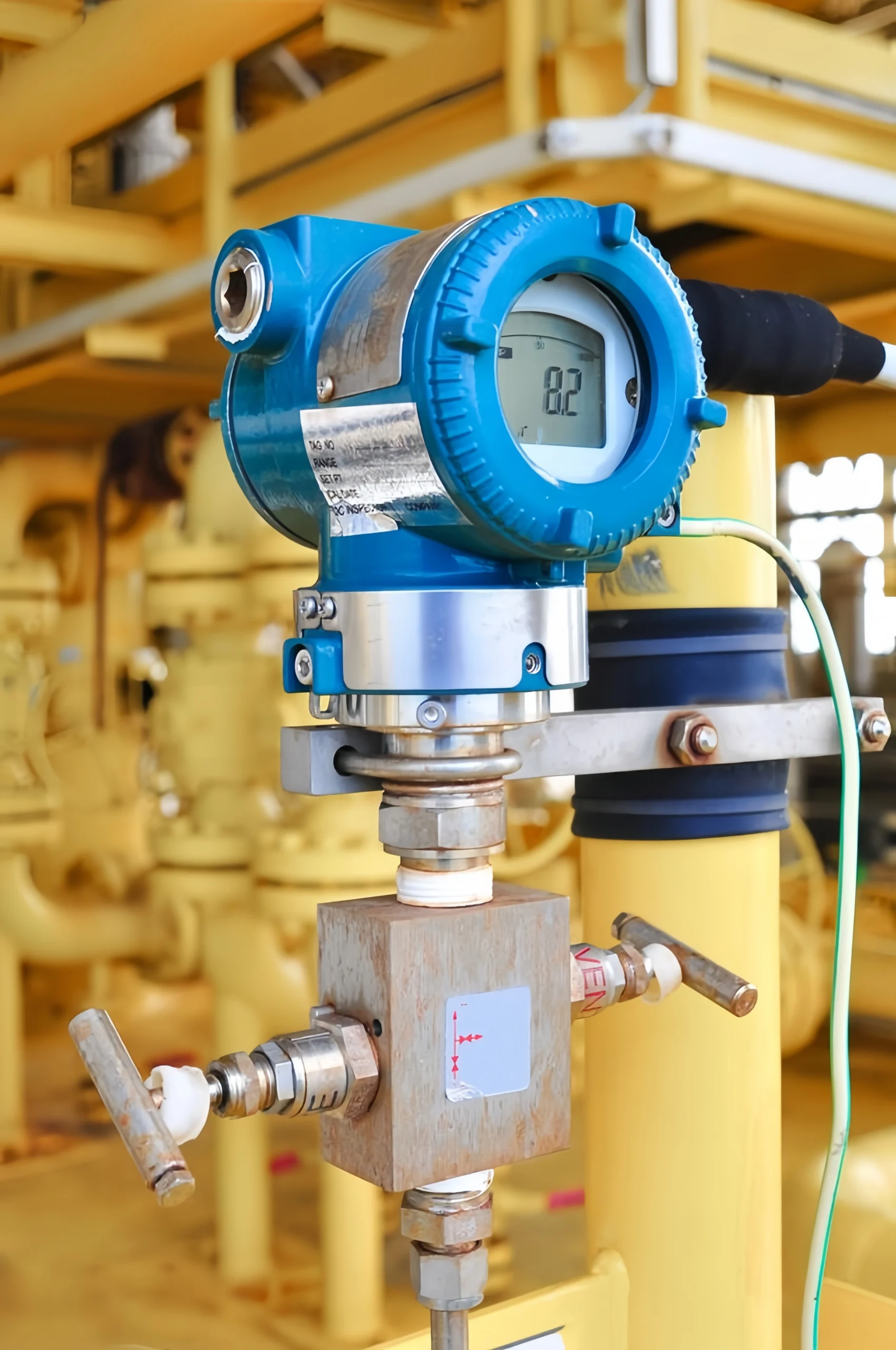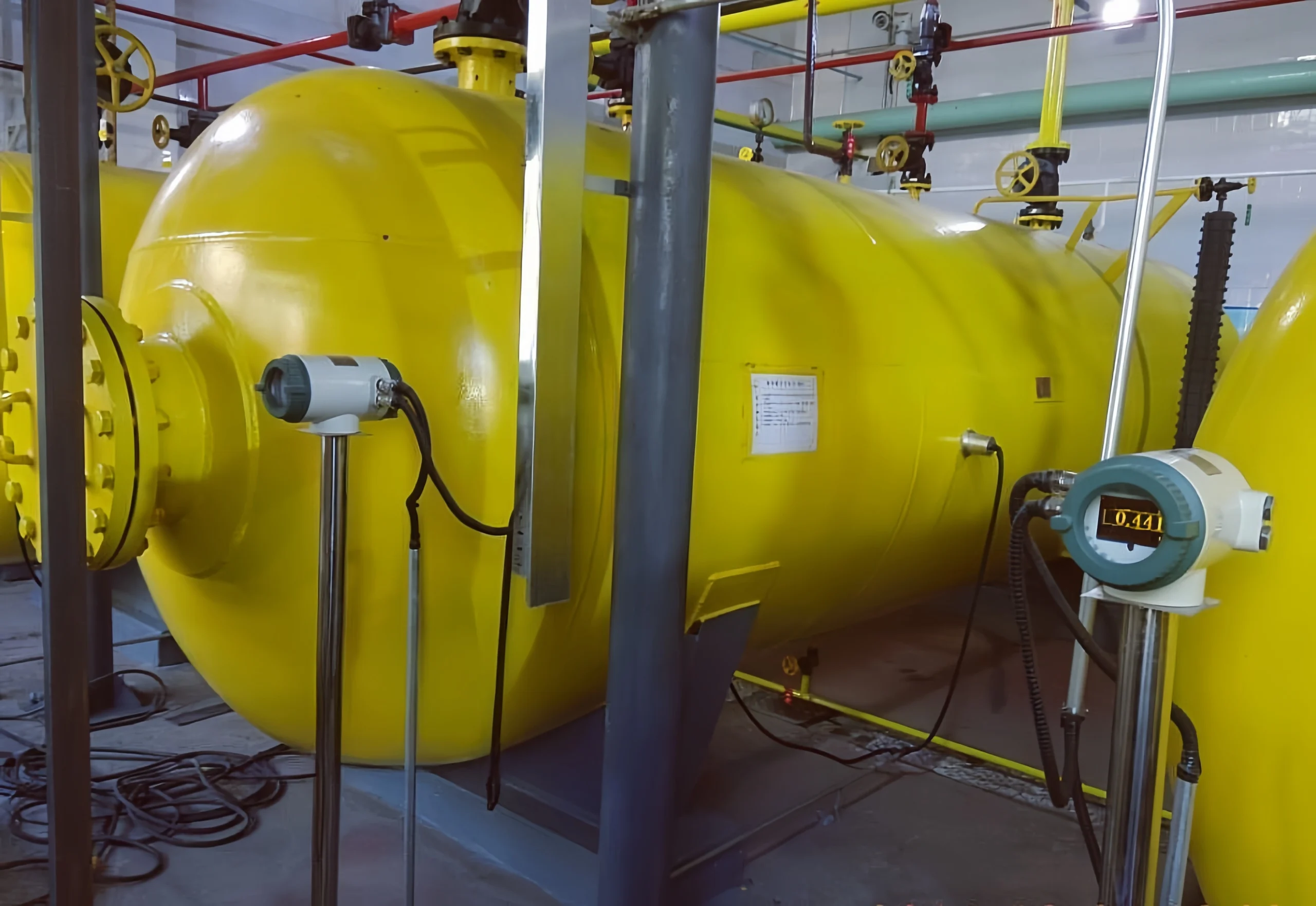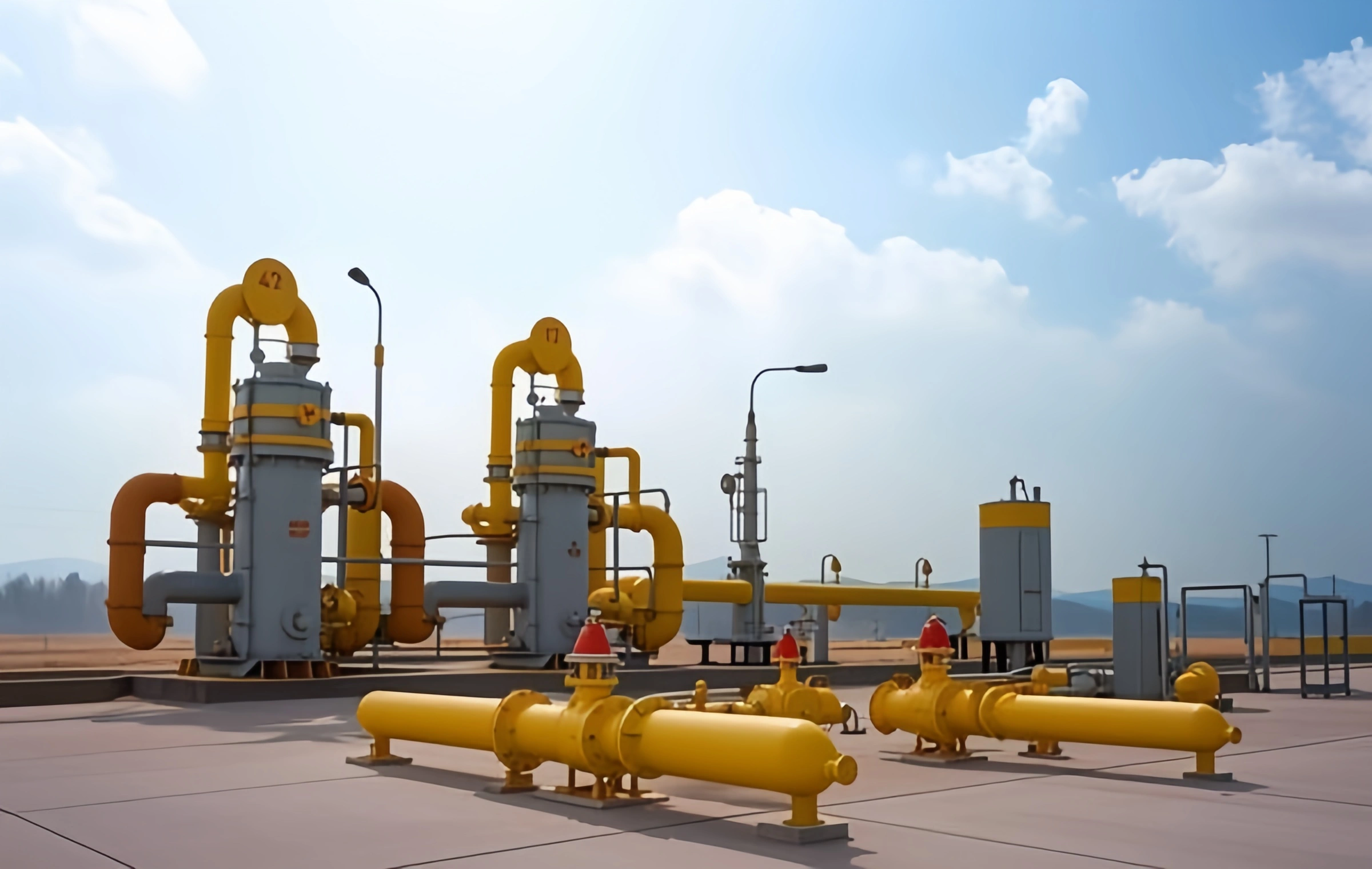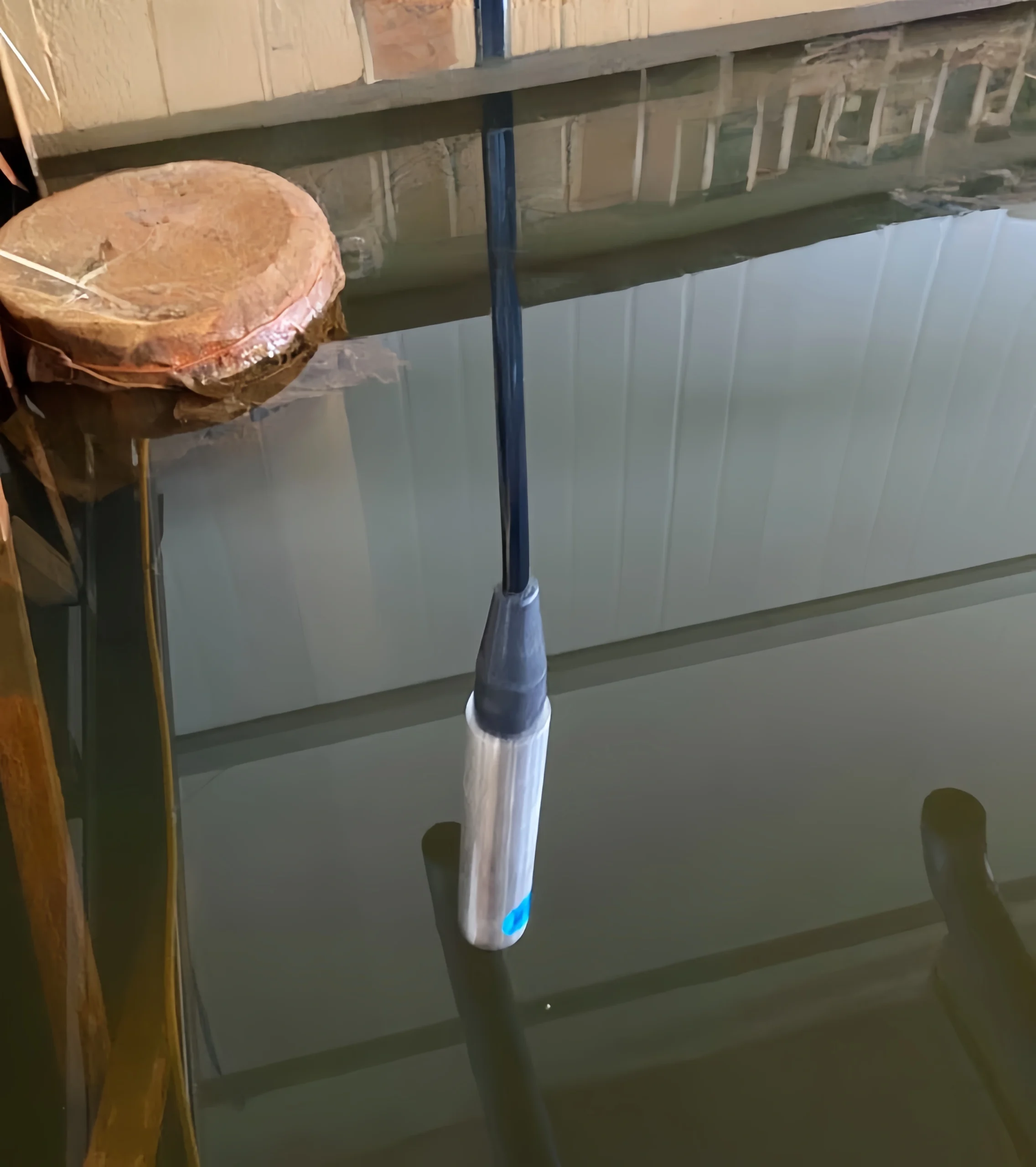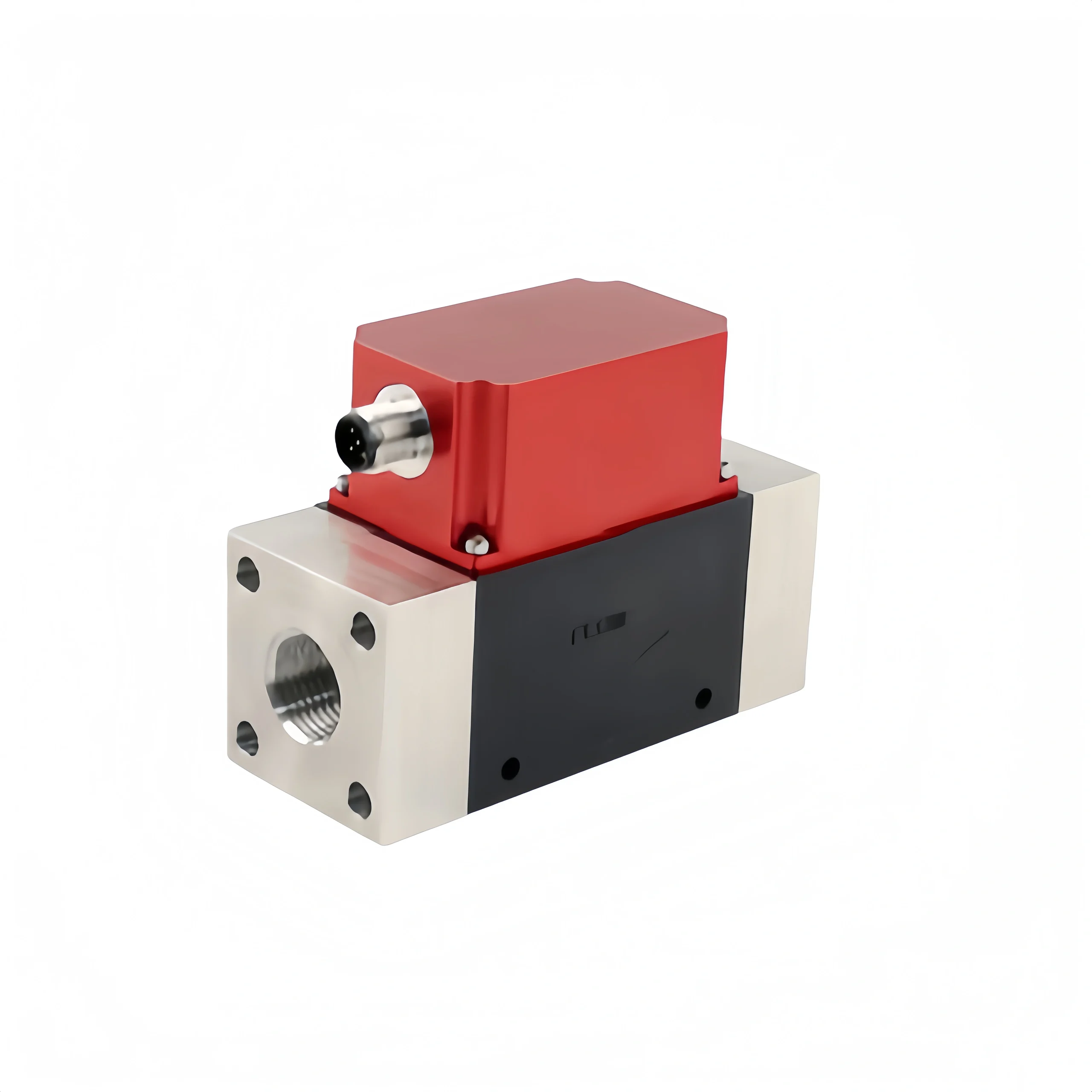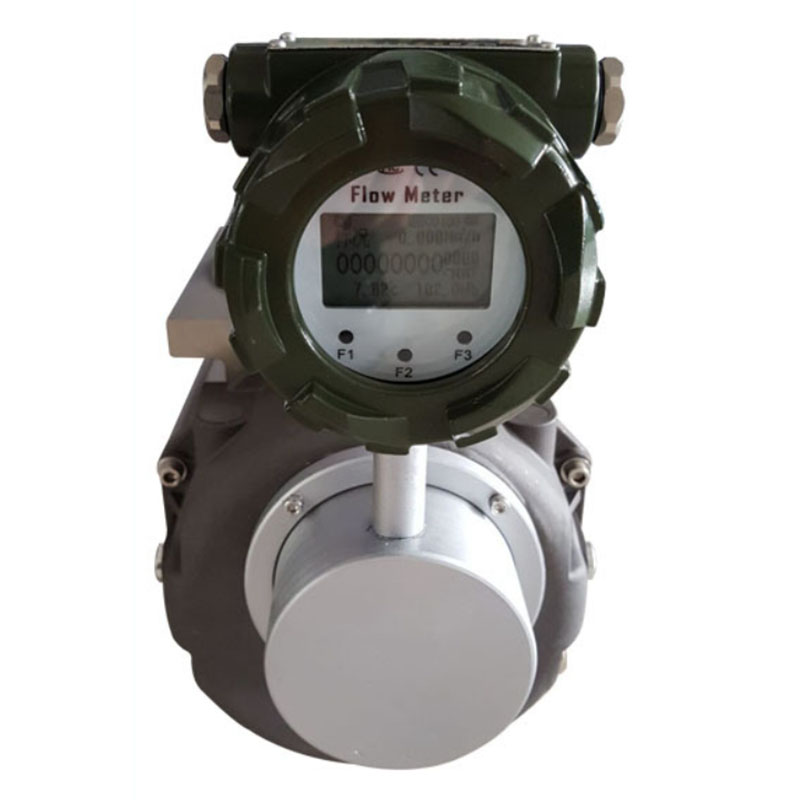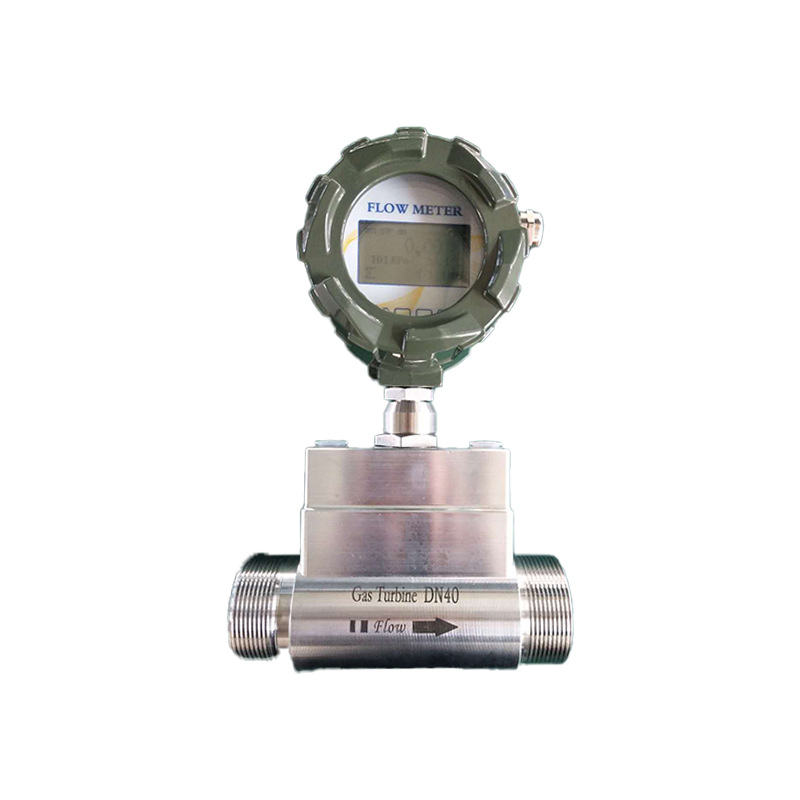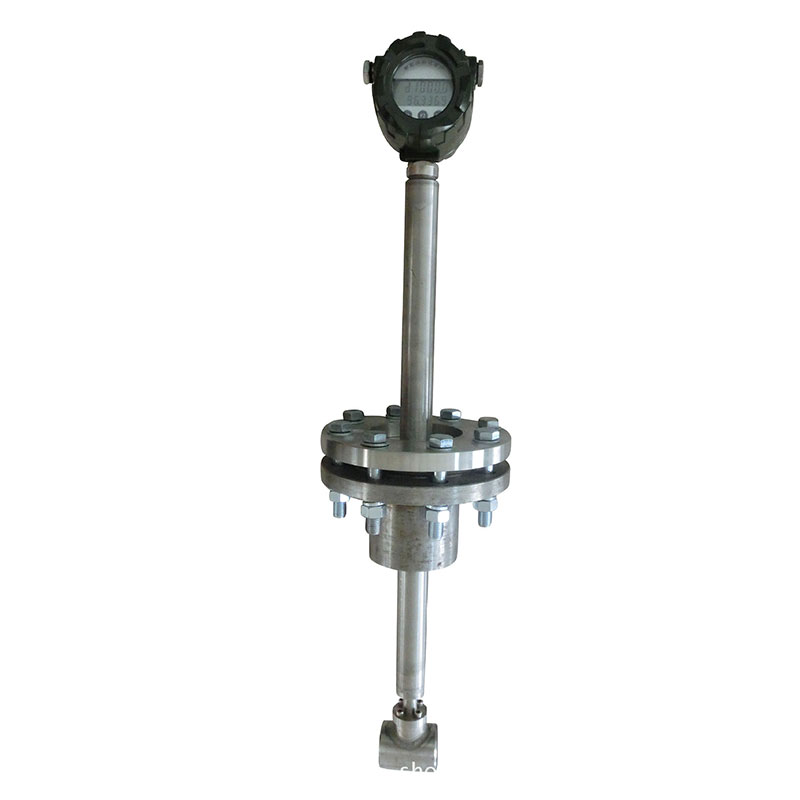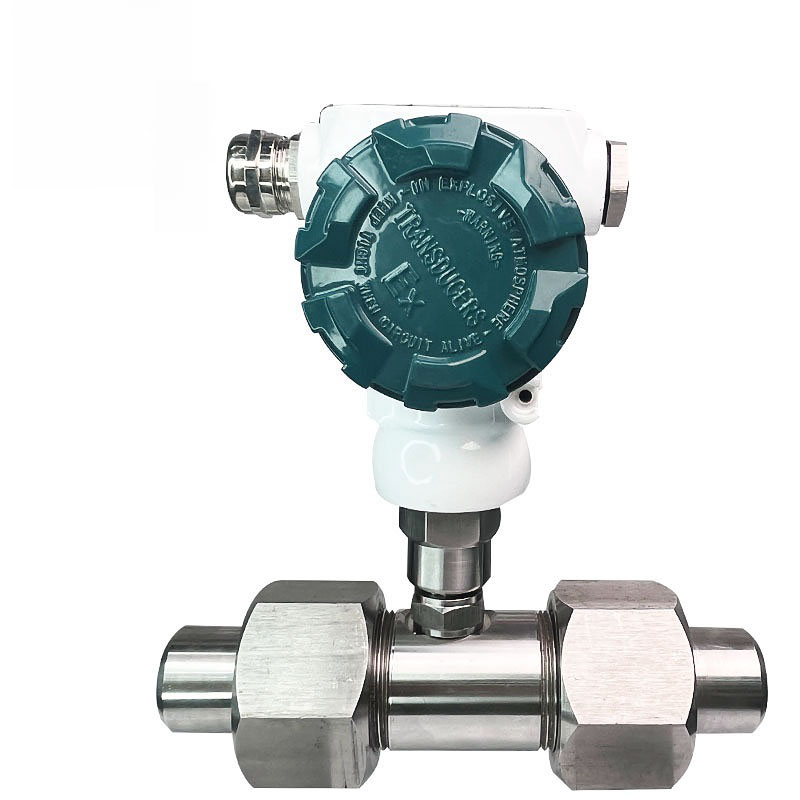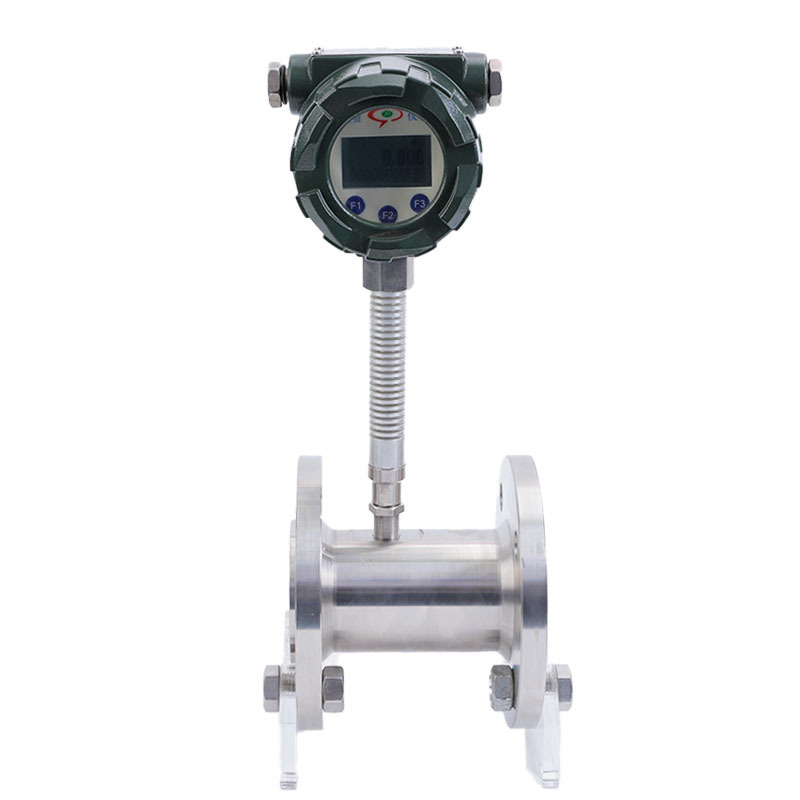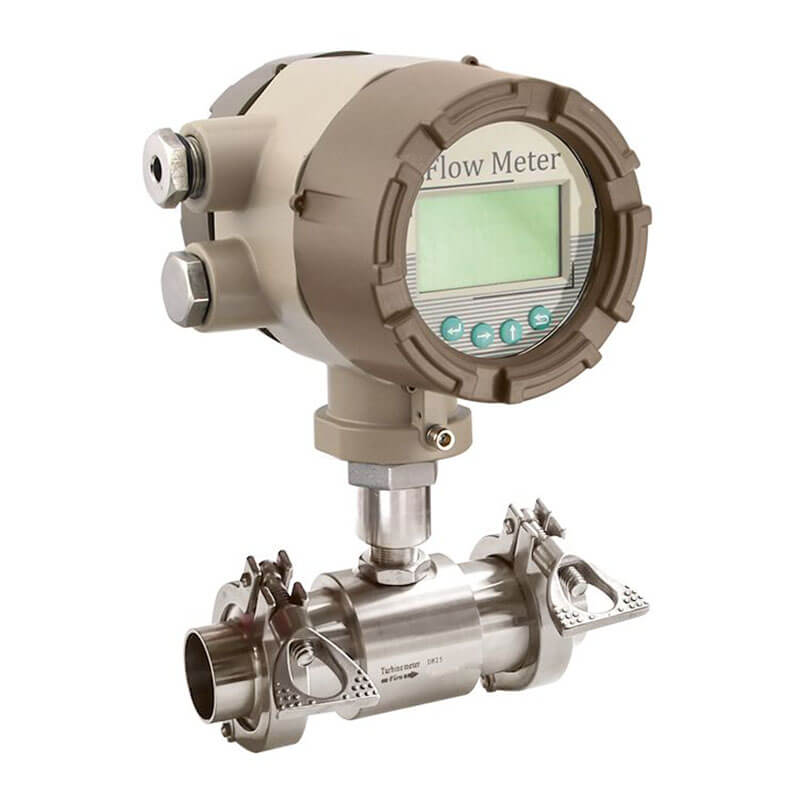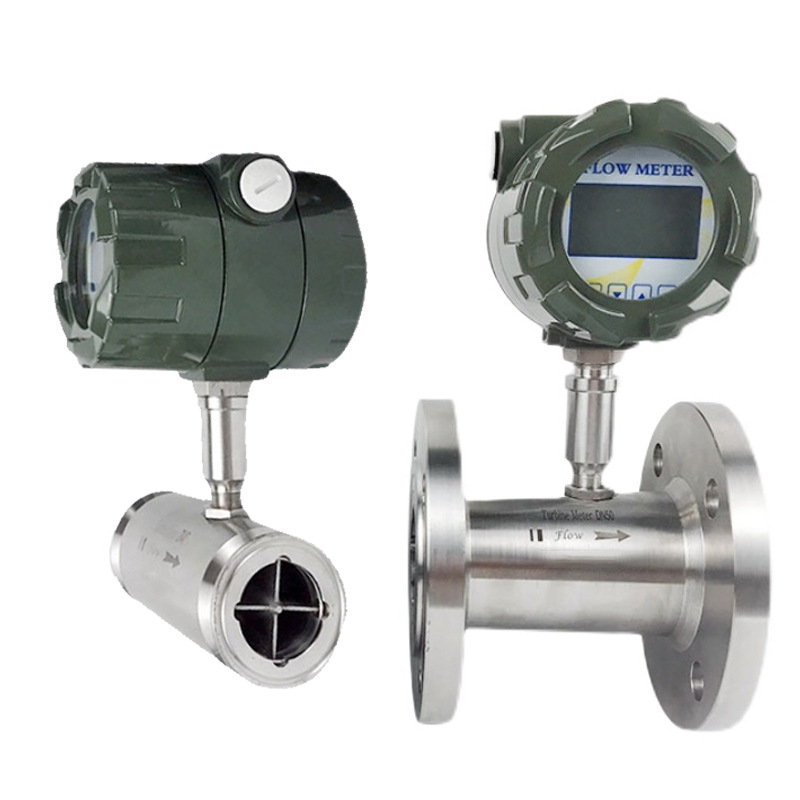Turbine flow meters are also known as impeller flow meters. They can measure the flow rate of organic liquids, such as petroleum, inorganic liquids, liquefied gas, natural gas, coal gas, and low-temperature, low-viscosity fluids.
If you want to learn more about turbine flow meters, this article is worth reading.

What is a Turbine Flow Meter?
A turbine flow meter is a velocity-type flow measurement instrument, which is used to measure the flow of liquids or gases.
Read More about: Guide for Different Types of Natural Gas Flow Meters
Pros:
- Wide turndown ratio, typically ranging from 10:1 to 20:1.1.
- High measurement accuracy, typically achieving ±0.5% to ±1.0%.
- Rapid response to flow changes, suitable for dynamic flow measurement, and capable of
promptly reflecting instantaneous flow variations. - Under stable operating conditions, multiple measurement results exhibit excellent repeatability.
Cons:
- Requires regular maintenance, including turbine cleaning and bearing lubrication, which increases operational costs.
- Fluid passing through the turbine flow meter causes some pressure loss, which may increase system energy consumption.
- Suitable for clean liquids or gases without impurities. However, it can measure non-corrosive, non-high-viscosity media without large particle impurities, causing turbine stalling or wear.
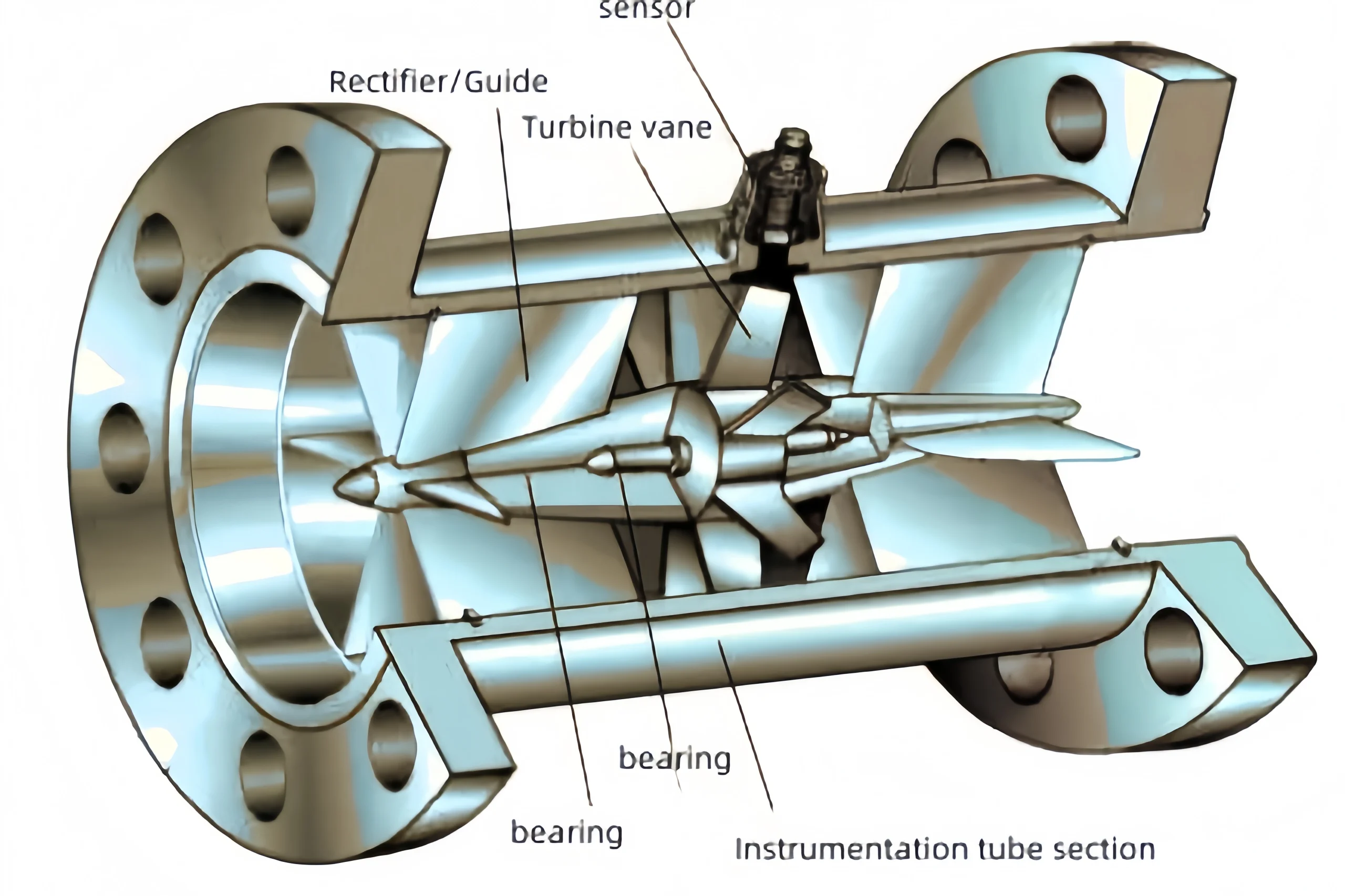
What does Turbine Flow Meters do?
Gas turbine flow meters and liquid turbine flow meters are used in different scenarios. The following is a detailed introduction.
Liquid Turbine Flow Meter
Liquid Turbine Flow Meter is particularly suitable for measuring the flow rate of low-viscosity, medium-viscosity, and low impurity content liquids, such as water, emulsions, ethylene glycol mixtures, diesel fuel, and fuel oil. It can also measure low-temperature and high-temperature liquids. The following are specific application industries:
Petrochemical Industry:
It can be used to measure the flow rate of various light petroleum products, such as gasoline, kerosene, and diesel fuel.
In chemical production, it can measure the flow rate of some low-viscosity chemical raw materials, such as methanol, ethanol, and acetone.
Pharmaceutical Industry:
Precise flow control is required for various liquid raw materials and intermediate products. The pharmaceutical industry has high hygiene requirements. The turbine flow meter has a relatively simple structure. It is easy to clean and disinfect. It can meet the hygiene standards of the pharmaceutical industry.
Food and beverage industry:
For low-viscosity liquid foods, turbine flow meters can quickly and accurately measure the flow of liquids such as beer, juice, and milk. During beverage filling processes, turbine flow meters can precisely control the filling volume.
Water treatment industry:
In urban water supply and wastewater treatment processes, turbine flow meters can be used to measure the flow of wastewater and sewage.
In industrial water treatment, turbine flow meters also require real-time measurement of the dosage of various treatment chemicals.
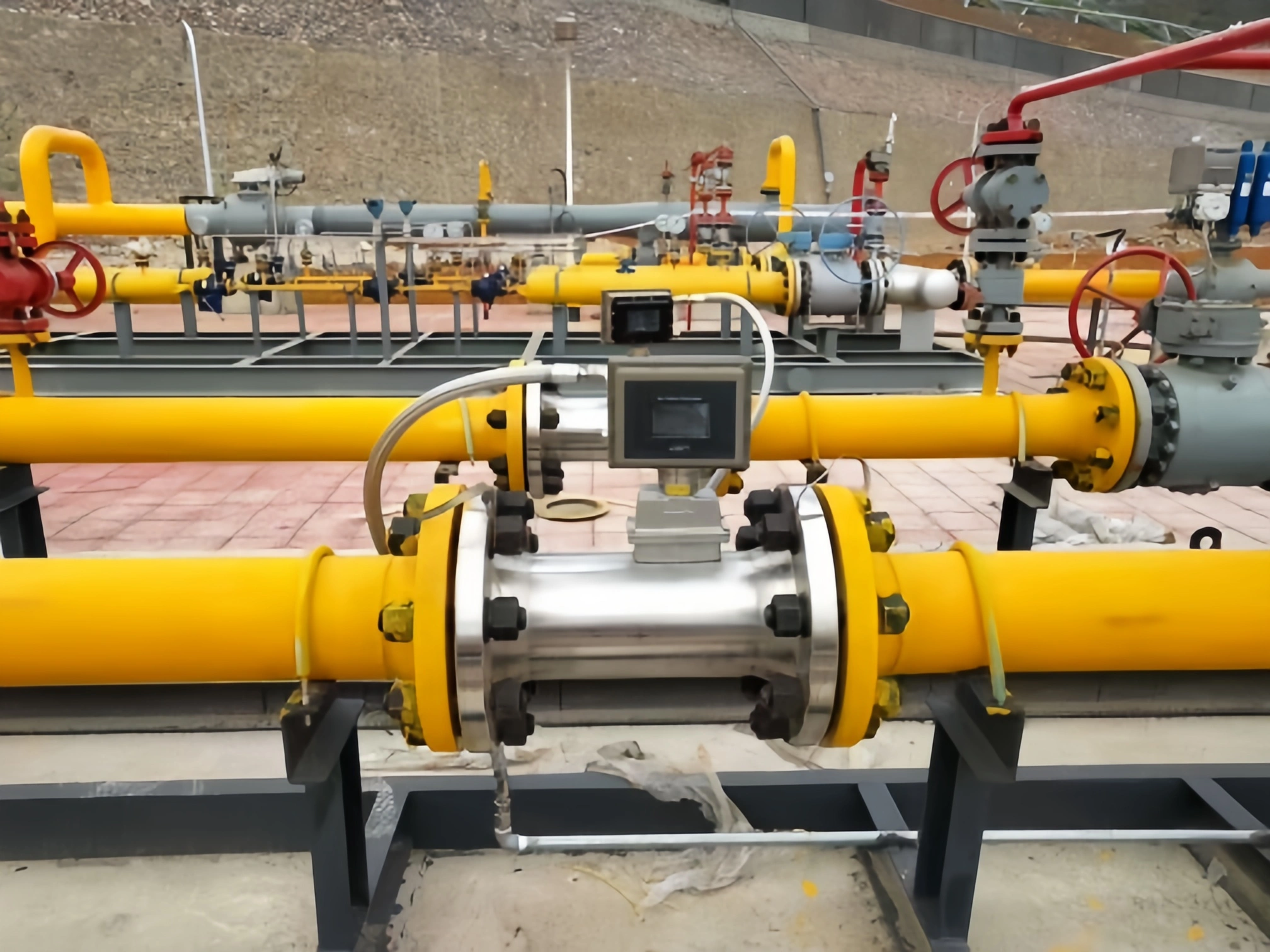
Gas Turbine Flow Meters
Gas turbine flow meters can measure the flow rate of non-corrosive gases and natural gas. The following are specific application scenarios, primarily including:
Chemical industry:
Gas turbine flow meters are used to measure the flow rate of reaction gases.
Oil and Gas Industry:
Used to measure natural gas flow rate and monitor oil and gas transportation.
HVAC systems: It measures air flow rates to ensure efficient system operation.
Energy management: In the power and heating industries, monitoring gas flow rates to optimize energy usage.
How does a Turbine Flow Meter Work?
Turbine flow meters operate based on the principle of conservation of angular momentum of fluids. The fluid being measured drives the turbine blades, which cause the turbine to rotate.
Within a certain range, the rotational speed of the turbine is directly proportional to the average flow velocity of the fluid. Through a magnetic-electric conversion device, the rotational speed of the turbine is converted into an electrical pulse signal, which is then amplified and sent to the display and recording instrument, thereby enabling the calculation of the instantaneous flow rate and cumulative flow rate of the measured fluid.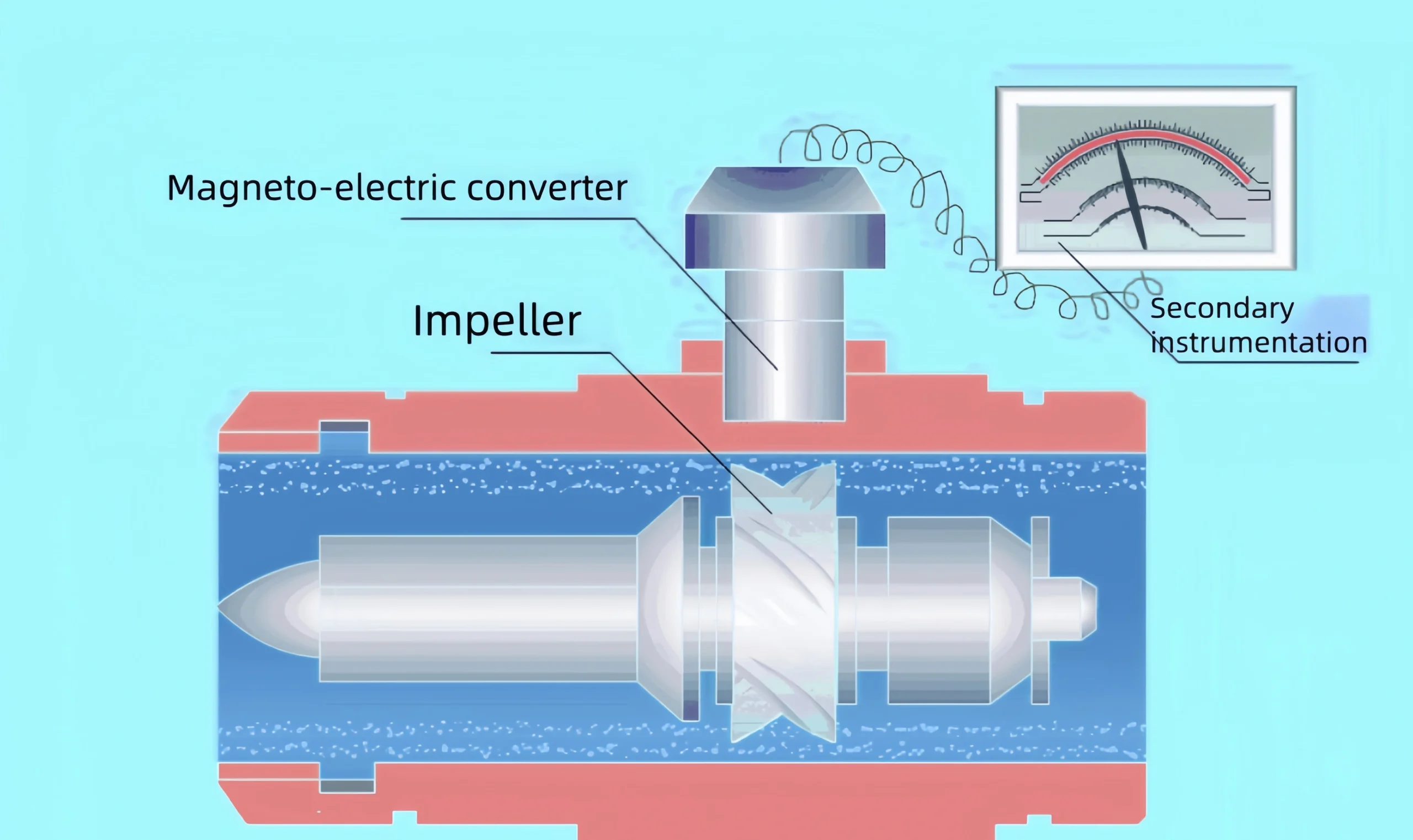
Types of Turbine Flow Meters
Turbine sensors can be classified into different types based on their angles. The following is a detailed classification:
Turbine flow meters can be classified into various types based on their installation interfaces, including flanged turbine flow meters, threaded turbine flow meters, clamp-on turbine flow meters, and insertable turbine flow meters.
Turbine flow meters can also be further classified based on signal detection methods. It primarily includes inductive, variable reluctance, reed switch, and photoelectric types.
Turbine flow meters can be further classified based on different media characteristics. It includes high-temperature turbine flow meters, general turbine flow meters, low-temperature turbine flow meters, and high-pressure turbine flow meters.
Sino-Inst can customize the following parameters: General turbine flow meter: -20°C to 120°C. Low-temperature turbine flow meter: -200°C. High-temperature turbine flow meter: 160°C. High-pressure turbine flow meter: 42 MPa.

Turbine Flow Meter Installation
The installation of turbine flow meters on process pipelines requires special care. Based on their installation methods, turbine flow meters can be classified into in-line turbine flow meters and insertion turbine flow meters. The following are key installation points:
Pre-installation considerations:
The installation location should be as far as possible from vibration sources and electromagnetic interference sources. Ensure the pipeline is thoroughly cleaned before installation to ensure measurement accuracy.
The axis of the turbine flow meter should align with the pipeline axis. Avoid installation tilting that could affect measurement accuracy.
During installation:
The turbine flow meter must be installed horizontally. The fluid flow direction must match the arrow indication. The surrounding environmental temperature should be maintained between 20-120°C. And the relative humidity does not exceed 80%.
The inner diameter of the pipeline connected to the flow meter must match the flow meter’s nominal diameter. The straight pipe section length before the flow meter should be at least 20 times the pipe diameter. The straight pipe section length after the flow meter should be at least 15 times the pipe diameter. To optimize measurement performance.
The centerline of the process pipeline must align with the centerline of the flow meter. And there should be no protrusions at the connection points extending into the pipeline, ensure the accuracy of the pipeline cross-section and the flow field distribution at the flow meter inlet.
To smoothly control flow and minimize upstream flow field interference, control valves should be installed downstream of the flow meter. Additionally, pressure gauges can be installed separately at the inlet or outlet of the flow meter. And temperature gauges should be installed downstream.
Additionally, a flow straightener can be used to reduce the impact of upstream vortex flows and shorten the required straight pipe length. A filter should be installed upstream of the flow meter to remove impurities. When measuring the flow of volatile liquids, a degasser should be installed to remove gases from the pipeline.
When measuring the flow rate of unidirectional fluids, a check valve should be installed downstream of the flow meter. To prevent fluid backflow from affecting the flow meter’s performance.
During installation, pressure should be minimized to avoid deformation and distortion caused by thermal expansion and contraction.
If conditions permit, a bypass pipeline should be installed. To protect the startup and to avoid interrupting fluid transportation during maintenance.
For flow meters without a preamplifier, the distance between the flow meter and the preamplifier should not exceed 3-5 meters. Shielded cables should be used for signal transmission. Flow meters with a preamplifier should use four-core shielded cables to transmit output signals to the flow indicator and accumulator. Ensure proper grounding of the flow meter and ensure normal operation and safe performance.
During startup, slowly open the pipeline valves to avoid overloading the flow meter and causing damage.
Intelligent flow indicator and accumulator display instruments should be placed horizontally or installed on an instrument panel. The installation height should be determined based on ease of reading and operation.
After installation, note the following:
Turbine flow meters require regular inspection and maintenance to ensure long-term stable operation.
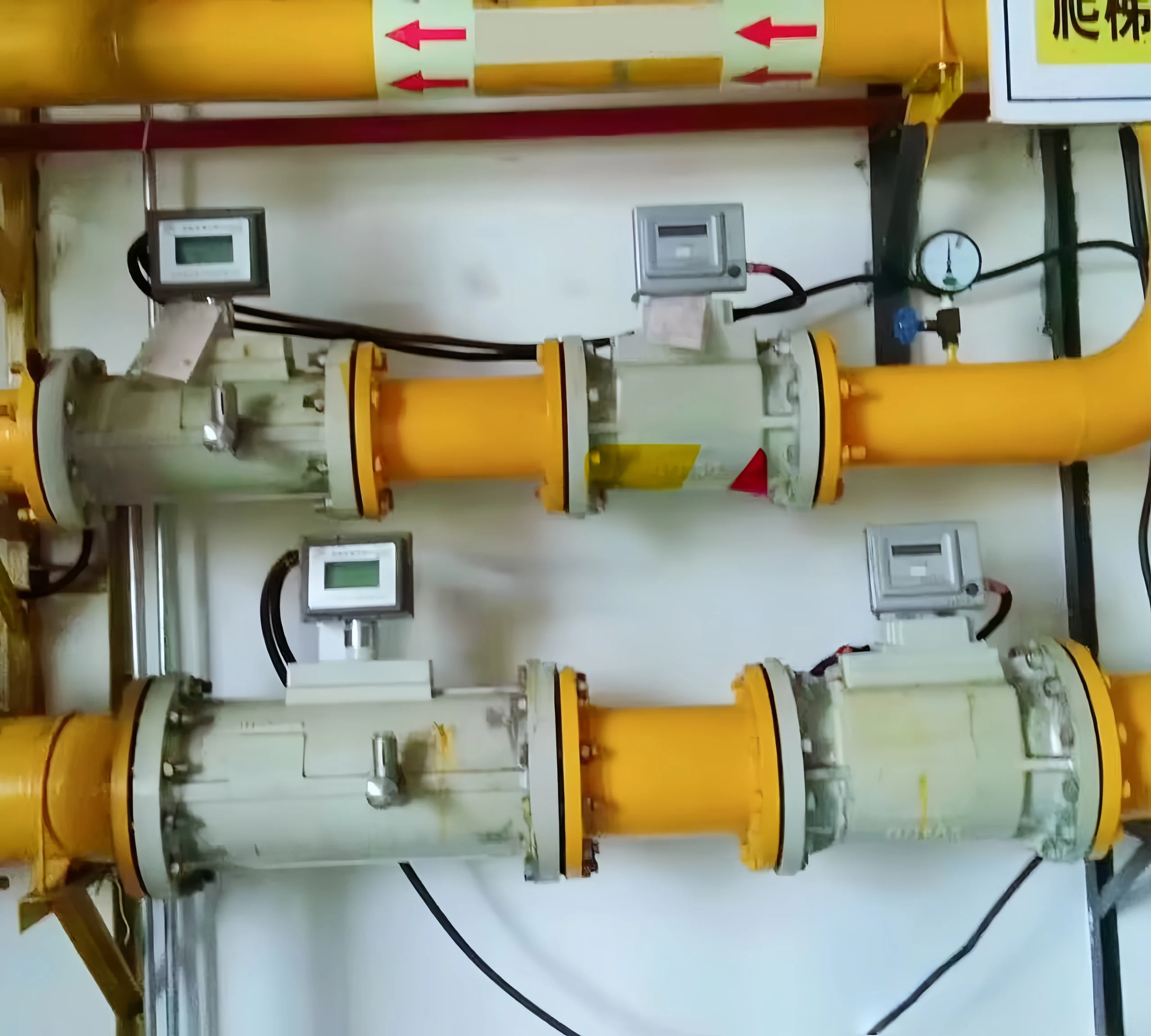
Sino-Inst Featured Turbine Flow Meter
How to Choose the Right Turbine Flow Meter - 8 Considerations
Selecting the right turbine flow meter can make a significant difference. When selecting a turbine flow meter, the following 8 parameters must be confirmed:
1. Measured medium.
Gases, or liquids such as water, pure water, organic liquids, and inorganic liquids that do not contain fibers or particulate impurities. Fibers and particulate impurities can cause damage to the turbine flow meter.
2. Pipe diameter. Unlike other flow meters, turbine flow meters can be made with very small diameters (DN4). Other flow meters typically only go up to DN15 or larger. However, the upper limit for turbine flow meter diameters is also small. Theoretically, it is only up to DN200, which still meets the needs of most applications on the market.
3. Measurement accuracy. Standard accuracy grades are 0.5 and 1.0. However, in applications requiring higher accuracy, higher grades are often needed. Our turbine flow meters can achieve an accuracy grade of 0.2.
4. Medium viscosity. Turbine flow meters are not suitable for measuring highly viscous liquids, as this can affect the rotation of the turbine blades.
If the medium is too viscous, we recommend an oval gear flow meter.
5. Output signal. The current output signals for the turbine flow meter include three-wire pulse output and two-wire 4-20 mA output. Additionally, some applications may require digital output. We can also provide Modbus RS-485 communication and RS-232 communication.
6. Nominal pressure. The main options are 1.0 MPa, 1.6 MPa, 2.5 MPa, 4.0 MPa, and 6.3 MPa. Our turbine flow meters can be customized up to 42 MPa.
7. Medium temperature. The main temperature range is -20°C to +120°C. If a wider range is required, we can provide customization.
8. Power supply. The main options include a 3.6V lithium battery, 12VDC, and 24VDC. Users can select the appropriate power supply based on yourself conditions.
What is the difference between a turbine flow meter and a mass flow meter?
| Comparison items | Mass flow meter | Turbine Flow Meter |
| Measurement principle | The structure is a double-bend tube structure, which detects the mass flow rate of the pipeline by measuring the Coriolis force acting on the double-bend tube. | The operating principle of a turbine flow meter is based on the energy conversion principle in fluid dynamics. When fluid flows through a pipe, it impacts the turbine blades, and the turbine’s rotational speed is precisely measured by a sensor. |
| Medium requirements | Most liquids can be measured. | Suitable for liquids and gases that are free of impurities, non-corrosive, and have low viscosity (high requirements for the medium) |
| Measurement display | The real-time density and mass flow rate of the medium can be measured and displayed directly. | Can only measure volumetric flow rate; cannot directly measure mass flow rate, which must be calculated using the medium’s density |
| Measurement accuracy | Accuracy can reach 0.1%. | Standard accuracy of 0.5%; for applications with stringent accuracy requirements, a mass flow meter is recommended |
| Purchase cost | The price is relatively expensive. | Relatively low cost |
What is the K factor of a turbine flow meter?
The flow meter coefficient K represents the ratio between turbine speed and flow rate.
Formula for calculating the flow meter coefficient
This coefficient is typically determined through experimental methods, with the calculation formula being:
K = Q / π · d / 4 · N
Where Q is the flow rate, d is the turbine diameter, and N is the turbine speed.
What is the measurement accuracy of a turbine flow meter?
Turbine flow meters have multiple accuracy grades, with common grades including 0.2%, 0.5%, and 1.0%.
In short, turbine flow meters are suitable for many applications. Users should select different types of turbine flow meters based on specific operating conditions. If you are unsure which turbine flow meter to choose, do not hesitate. Contact us immediately. Our years of experience can provide you with the most cost-effective solution.
Sino-Inst is a Chinese turbine flow meter supplier. We offer a variety of turbine flow meters for your selection. If you have any questions after reading this content, please feel free to contact us.

